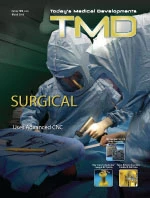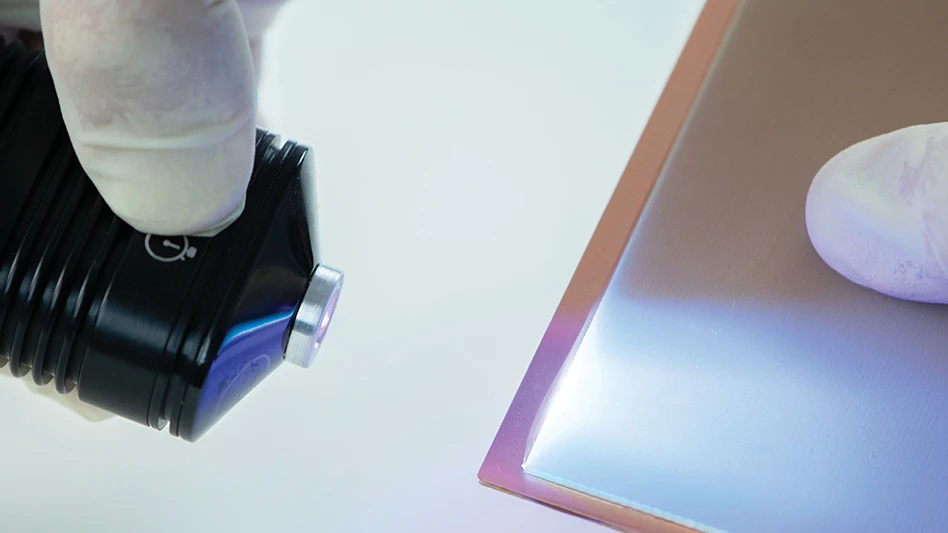The advancements in cell phone technology have changed the role that these devices play in our life, making them much more than just mobile telephones. With the capability to manage calendars, receive emails, play music, and surf the web, people find it impossible to live without their BlackBerry or iPhone. These powerful platforms that fit in the palm of our hand have more computing power and memory than the computers that sent man to the moon.
Despite the rapid adoption of wireless technologies in a variety of applications, their use in healthcare is still fairly embryonic. That said, it does appear that the time is ripe for this to change rapidly in the near future. Several factors are aligning that may well trigger a revolution in the way healthcare is practiced. Rising healthcare costs are forcing governments everywhere to think of innovative solutions and means to provide care. Most developed countries are actively implementing electronic medical records and focusing on other IT based solutions. Moreover, the underlying technology is now quite mature and affordable.
Wireless technologies can make a big difference in hospitals and clinics by reducing the cable clutter as well as enabling real time, on-the-go access to patient data. Completely digital operating rooms and intensive care units can increase efficiency and improve quality of care. Physicians and nurses equipped with handheld computers or smart phones can not only access complete patient records and lab results at the bedside, but also look up drug interactions and side effects in real time, drastically reducing the chance of medical errors. Wireless sensors and data transmission can enable ambulatory monitoring of physiological parameters so post-surgery patients quickly become mobile, reducing recovery time.
 VenaHub employs a small pocket device to capture data from a user’s ecosystem of wireless medical devices and then integrates into a customizable online health information portal.The biggest benefit of wireless technologies in healthcare will be realized outside clinical settings – by connecting consumers with healthcare professionals from within their homes or offices. Providing consumers with access to their own data and a simple means to reach their care providers on a regular basis can significantly improve the care cycle. Management of chronic diseases can be enhanced if patients are monitored regularly and provided with day-to-day coaching to better control their conditions. This can be achieved via connected devices that can provide guidance and record actions. For example, wireless enabled drug delivery devices programmed with the prescription regimen can remind patients to take their medications and record whether or not the medication was delivered. Data from these devices can be transmitted via Bluetooth or WiFi technology to home computers or cell phones and be sent to physicians or uploaded to electronic medical records.
VenaHub employs a small pocket device to capture data from a user’s ecosystem of wireless medical devices and then integrates into a customizable online health information portal.The biggest benefit of wireless technologies in healthcare will be realized outside clinical settings – by connecting consumers with healthcare professionals from within their homes or offices. Providing consumers with access to their own data and a simple means to reach their care providers on a regular basis can significantly improve the care cycle. Management of chronic diseases can be enhanced if patients are monitored regularly and provided with day-to-day coaching to better control their conditions. This can be achieved via connected devices that can provide guidance and record actions. For example, wireless enabled drug delivery devices programmed with the prescription regimen can remind patients to take their medications and record whether or not the medication was delivered. Data from these devices can be transmitted via Bluetooth or WiFi technology to home computers or cell phones and be sent to physicians or uploaded to electronic medical records.
The key benefit of wirelessly connected devices is the simplicity of real time data capture and transmission. These devices can be user friendly, and, without the shackles of cables, can fit into daily lives of consumers without becoming a burden. The simplicity could boost device usage and compliance by patients, thereby enabling quick feedback and closing the information loop between patients and their care providers. Acquired data can be processed and reviewed by smart data analysis software that can flag alerts if a problem is spotted. Algorithms can detect short and medium term trends allowing potential onset of disease to be spotted early, thereby reducing long term complications and lowering healthcare costs.
For example, blood pressure rising slowly over eight to ten months is a likely indication of early stage heart disease. This can be detected if blood pressure is recorded several times every month and the data is recorded in a back-end monitoring system. Today, most people get their blood pressure checked at annual physicals, which does not provide the obvious evidence of lurking problems until they manifest themselves as serious conditions.
Despite all the advantages and benefits that wireless technology could bring, its adoption in healthcare has been very slow. This can be attributed to several factors. The primary adopters, the medical staff, are largely unfamiliar with this technology, lacking the confidence to adopt it and remain reluctant to change their routine workflows. Reimbursement for remote/at home care is non-existent, leading to the ‘Who pays?’ syndrome and further resistance by physicians to deploy alternative care models.
Cost of technology and associated infrastructure has long been an issue but with widespread cellular networks and availability of single chip wireless solutions, cost has gone down significantly.
Reliability is another concern on people’s minds. Data security and quality of data transmission plagues several wireless networks. But smart network design and use of appropriate transmission protocols can mitigate this risk. The FCC has set aside dedicated frequency bands for medical devices. Moreover, specialized protocols with enhanced security features are now available for transmission of medical data.
 This blood pressure monitor, developed with A&D Medical, is part of their Connected Patient campaign to provide real-time medical monitoring.The biggest issue with advanced communication technologies is interoperability. But this issue is not limited to wireless devices. Even with traditional wired equipment, hospitals have to accommodate a myriad of data formats and use dedicated receivers for each device used. Efforts are underway to overcome the interoperability issue by establishing communication standards. The Integrated Clinical Environment (ICE) standard is being developed in coordination with the ASTM to ensure plug-and-play operation of devices in hospitals. The Continua Health Alliance with more than 200 members comprised of medical device manufacturers, pharmaceutical companies, providers and payers, is making great strides in establishing standards for various monitoring and therapy devices. These standards will ensure that data from Continua Certified devices will be transmitted in a particular format, using a predetermined protocol. This means that a single data manager from one manufacturer can receive data from any number of certified devices made by different manufacturers. Interoperable devices and systems can enable quick and widespread deployment of wireless technologies – something that devices using proprietary protocols have not been able to achieve.
This blood pressure monitor, developed with A&D Medical, is part of their Connected Patient campaign to provide real-time medical monitoring.The biggest issue with advanced communication technologies is interoperability. But this issue is not limited to wireless devices. Even with traditional wired equipment, hospitals have to accommodate a myriad of data formats and use dedicated receivers for each device used. Efforts are underway to overcome the interoperability issue by establishing communication standards. The Integrated Clinical Environment (ICE) standard is being developed in coordination with the ASTM to ensure plug-and-play operation of devices in hospitals. The Continua Health Alliance with more than 200 members comprised of medical device manufacturers, pharmaceutical companies, providers and payers, is making great strides in establishing standards for various monitoring and therapy devices. These standards will ensure that data from Continua Certified devices will be transmitted in a particular format, using a predetermined protocol. This means that a single data manager from one manufacturer can receive data from any number of certified devices made by different manufacturers. Interoperable devices and systems can enable quick and widespread deployment of wireless technologies – something that devices using proprietary protocols have not been able to achieve.
Our recommendation to those wanting to enter the market is to pay close attention to standards and developing international regulations. The FDA has established a committee to oversee new regulations that might begin reviewing an overall wireless device network/system rather than just the transmitting device. The process and time required to obtaining regulatory approval for connected medical devices will depend on the existence of predicate devices, the nature of data being transmitted, as well as the intended use of that data.
With the growing adoption of wireless technologies in healthcare, opportunities abound for medical device manufacturers, pharmaceutical companies, and health IT developers alike. Several large players seem to be taking a wait and watch approach. However, the innovative risk taker could set the bar and grab large market share. Rather than be discouraged by apparent complexities and obstacles, new entrants in the wireless medical space can take informed steps toward building the market and reap significant rewards in the near future.
Cambridge Consultants
Cambridge, MA
cambridgeconsultants.com

Explore the March 2010 Issue
Check out more from this issue and find your next story to read.
Latest from Today's Medical Developments
- Creaform’s Pro version of Scan-to-CAD Application Module
- Humanoid robots to become the next US-China battleground
- Air Turbine Technology’s Air Turbine Spindles 601 Series
- Copper nanoparticles could reduce infection risk of implanted medical device
- Renishaw's TEMPUS technology, RenAM 500 metal AM system
- #52 - Manufacturing Matters - Fall 2024 Aerospace Industry Outlook with Richard Aboulafia
- Tariffs threaten small business growth, increase costs across industries
- Feed your brain on your lunch break at our upcoming Lunch + Learn!





